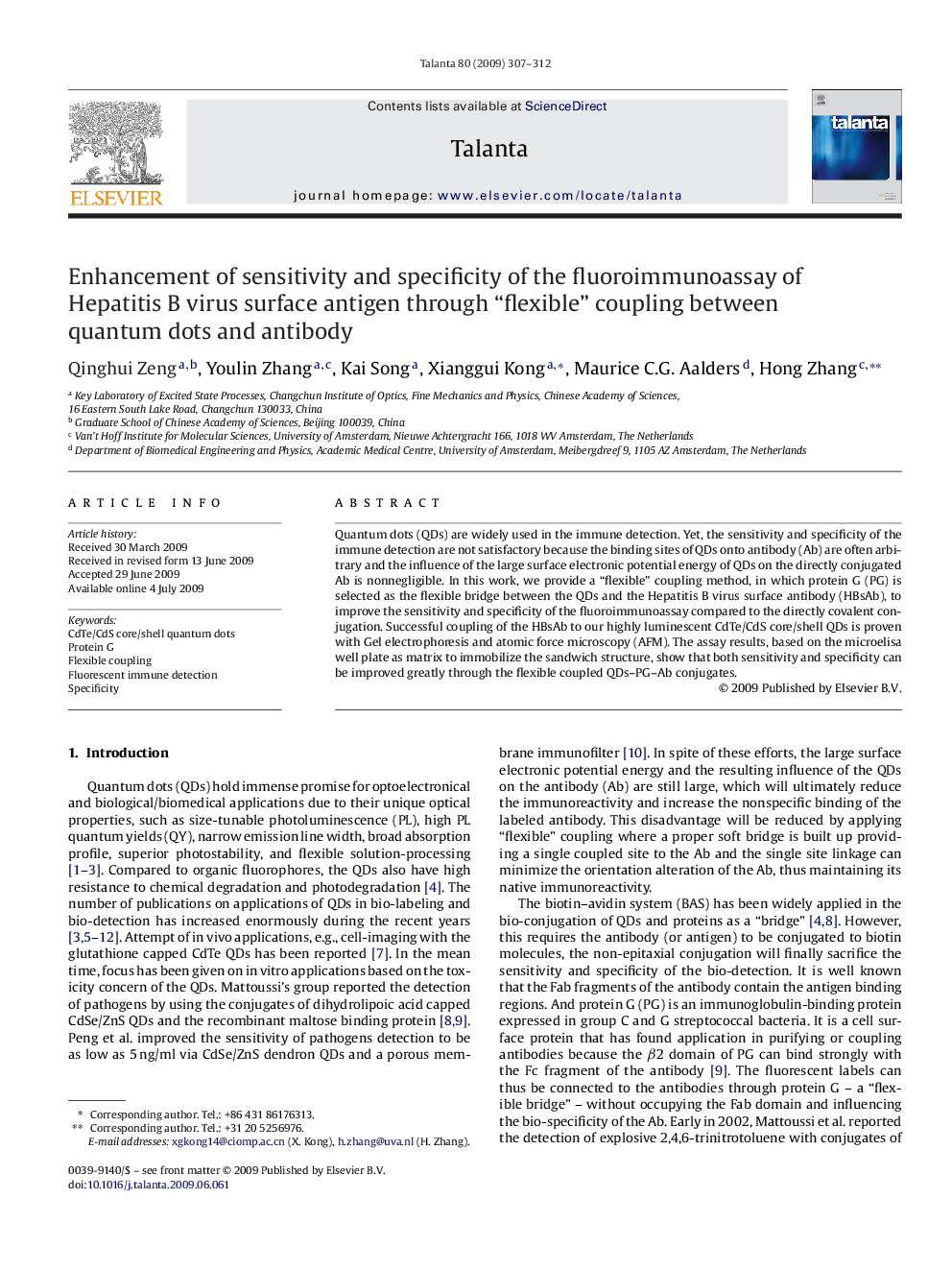| Article ID | Journal | Published Year | Pages | File Type |
|---|---|---|---|---|
| 1243682 | Talanta | 2009 | 6 Pages |
Quantum dots (QDs) are widely used in the immune detection. Yet, the sensitivity and specificity of the immune detection are not satisfactory because the binding sites of QDs onto antibody (Ab) are often arbitrary and the influence of the large surface electronic potential energy of QDs on the directly conjugated Ab is nonnegligible. In this work, we provide a “flexible” coupling method, in which protein G (PG) is selected as the flexible bridge between the QDs and the Hepatitis B virus surface antibody (HBsAb), to improve the sensitivity and specificity of the fluoroimmunoassay compared to the directly covalent conjugation. Successful coupling of the HBsAb to our highly luminescent CdTe/CdS core/shell QDs is proven with Gel electrophoresis and atomic force microscopy (AFM). The assay results, based on the microelisa well plate as matrix to immobilize the sandwich structure, show that both sensitivity and specificity can be improved greatly through the flexible coupled QDs–PG–Ab conjugates.
